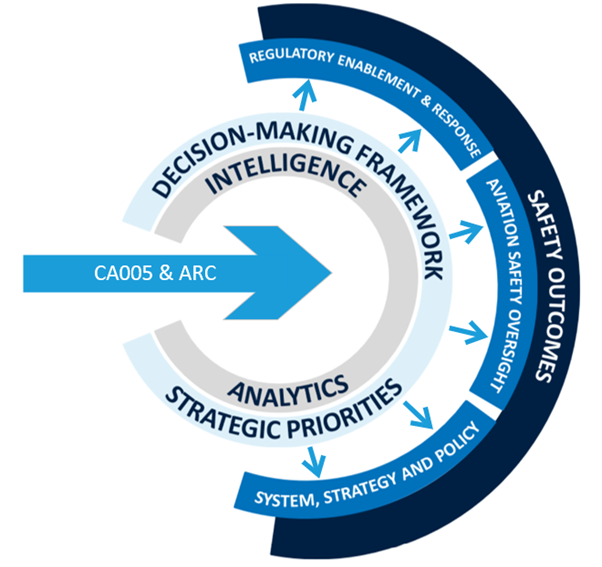Our triage function is managed by our Triage, Assessment and Coordination team in our Regulatory Response and Enablement group. It is responsible for receiving and processing all information that is formally reported to the CAA. It sits alongside our Information, Research and Analytics team, and our Regulatory Intelligence and Insights team.
CAA receives a lot of information through different channels and sources, which informs our various regulatory activities. Our triage function ensures that:
Most of the information we receive is reported to us – either as a requirement by Civil Aviation Rules, or voluntarily.
A lot of this information is about occurrences, which is the umbrella term for accidents, incidents, and immediate hazards to the safety or security of an aircraft operation. Some of the information we receive isn’t about any of these things, but in the interests of simplicity all information received by our triage function is referred to as ‘an occurrence.’ Therefore, in relation to our triage process, ‘occurrences’ includes aviation related concerns.
To learn about the types of information and ways it can be reported to us, visit Notify us.
There are two stages in the triage process
Stage one: Each occurrence is input into our computer system and checked to determine whether it is relevant to CAA and whether it requires additional assessment.
At this stage, some occurrences will be filed without further action being taken by the Assessment, Triage and Coordination Team. The information within these occurrences will still be available to teams across CAA for analysis – see other ways we use information.
Stage two: The occurrence is assessed against a series of set criteria to determine the priority level.
The priority levels are referred to as Category 1 – 3, with Category 1 being the highest priority and Category 3 being the lowest priority.
Examples of these set criteria include organisational focus areas, nature of the operation, potential level of risk or harm, barriers remaining to prevent an accident, and extent of actual harm or damage.
Stage 3: Based on the category, an action is determined.
Click for larger version [PDF 193KB]
The actions within each category are all aimed at delivering safety outcomes.
Category 1: Occurrences are referred directly to our Investigations team for further work.
Category 2: Occurrences are discussed by managers from various teams to determine which regulatory tools are the most appropriate for addressing the occurrence. Teams include Investigations, Licensing, Certification, Monitoring and Inspection, Engagement and Interventions and Aeronautical Services. Together, an action might be assigned to one or more of these teams accordingly.
Category 3: Occurrences will generally result in an educational response or no further action, depending on the content of the occurrence.

As well as the triage process described above, each occurrence contributes to our broader information base, which is used to give the CAA and understanding of the aviation safety and security environment.
Our Information, Research and Analytics and Regulatory Intelligence and Insights teams analyse this information to identify trends and insights and combine it with other sources of information to develop information products for use across the Authority.
These products are used at a strategic level to guide our direction and target key safety and security risks, and at operational levels to determine work programmes and initiatives.